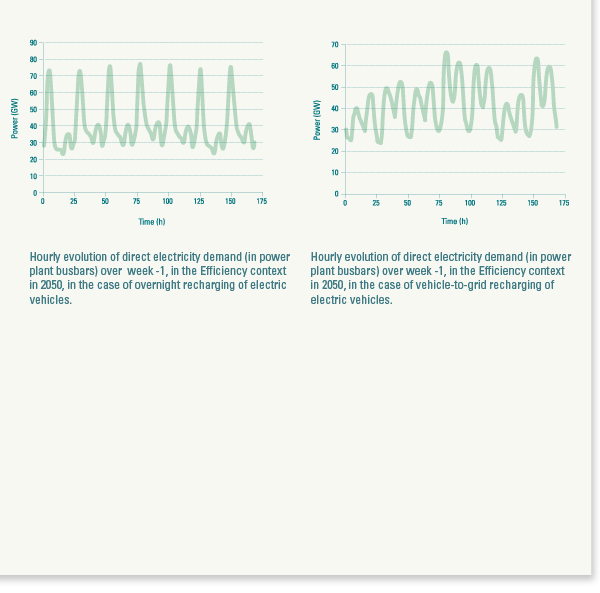In order to analyse how to satisfy the demand, it is not enough to take into account the amount of energy needed in every form, but it is also necessary to consider the variation in demand over time. To this end, the 2008 (last year before the economic crisis) temporal modulation of electricity demand was chosen to describe the time dependence of electricity demand in the BAU Scenario and adapted to 2050.
In the Efficiency Scenario the temporal variation of demand is based on the results of the analysis carried out in each sector (building, transport and others). The hourly distribution of direct electricity demand is analysed in two cases, depending on how the electric vehicles are recharged.
The first case corresponds to overnight charging of electric vehicles, in order to level the current electrical system's load curve. In the second case, electric vehicle charging is through a two-way interaction between these vehicles and the electrical system (V2G – vehicle to grid), so that the storage capacity and the power of electric vehicles become flexibility mechanisms to regulate the electrical system.
Hydrogen is the other energy vector for which hourly distribution of its demand is relevant.



